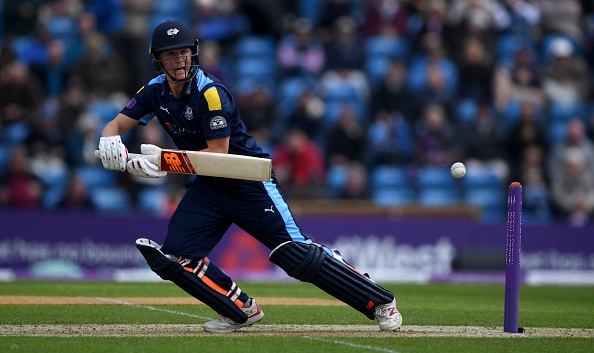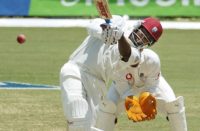Derek Pringle looks at the factors behind the recent upturn in form of Yorkshire’s new captain Gary Ballance
Form. According to cricket lore, players fall in and out of it all the time. Indeed, it is a right of passage to do so. Broadly, two rules exist about it. Those who are in form want to hang on to it as long as possible, while those out of it want to rekindle it as quickly as they can.
Escaping the clutches of the latter can be far from straightforward, as many can testify. And yet it can be achieved as Yorkshire’s Gary Ballance appears to have done, the burly left-hander having broken free of its grasp with a glut of big scores in the opening weeks of the season.
Ballance began his England career at a gallop, scoring four hundreds in his first nine Tests. Since then, he has played another 12 Tests without reaching the fabled three figures, his career stuttering then stalling as bowlers steadily unpicked and exploited his quirky technique until it became a liability.
He was last seen in Bangladesh last autumn, his confidence shot, and unable to beg, steal or borrow a run as his four Test innings ended in single figures. He travelled on to India with the England squad, but was never a realistic option for selection, his time spent instead in the nets working out how and why his fall from form had been so precipitous.
The main cause, was his habit of moving back deep into his crease and then not really moving back into the ball with any conviction when it was pitched up. A batsman with such reluctant footwork is catnip to most fast bowlers whose standard tactic is to push them back with the short ball then pitch it up in the hope of lbw or bowled as the batsman is caught on the crease trying to get forward.
It may sound simple, but it is effective as Ballance’s cheap dismissals to New Zealand’s Trent Boult, and several other pace bowlers, has attested. Ballance’s method, which had served him well in the lead up to being picked for England, had become exaggerated once he faced better and faster bowlers. The principle reason for this is that he did not have a sound run-scoring option against the short ball unless it was wide enough to cut. Getting back deep into his crease was therefore a ploy to give him a fraction longer to assess what he might do with any bouncers he got (and he got plenty once bowlers sensed his weakness), while simultaneously giving him a better chance to cut the short ball (his favourite shot), should it be off line.
The trouble was it made him vulnerable to bowlers who could either swing or seam the ball, of which most of the good ones can, especially at the stage Ballance was coming to the crease at number three.
So, what to do? Well the first thing was to admit that he had a problem, which he did, though you’d be surprised how many remain in denial cursing bad luck, bad decisions and bad pitches for their malaise. The next was to keep believing that he was a good player, something not easy once the runs dry up and you start making changes to your technique.
Golfers might completely reconstruct their swings when seeking to eradicate glitches, but they are striking an inert ball, which makes the mechanics more straightforward. According to Graham Gooch, who had to fix one or two technical issues during his own career as well as the travails of others as England’s batting coach, making big changes is probably not feasible.
“You have to stick to your own game and retain faith in it,” said Gooch. “That doesn’t mean you should not make the odd alteration, though drastic ones rarely pay off. Gary’s problem has always been his failure to transfer his weight from back to front foot quickly and efficiently, especially against fast bowlers. But while that can be worked on the key is not to lose confidence in yourself or your core method.”
As ever, prevention is better than cure, though Gooch reckons most players approach the matter of form in the wrong way.
“It is human nature, but when players are in good nick they tend to relax and take their foot off the gas,” he said. “They then work harder when they experience a downturn.
My belief is it should be the other way around. Sweat and toil when you are playing well, little but often when you are not.”
Ballance’s solution, when he returned to Yorkshire after Christmas, was to groove a solution by hitting lots and lots of balls indoors and out. He has also sought a solution for one of the causes of his malaise by giving himself another option against the short ball, this time with the pull shot. In the past, bowlers would frustrate him by giving him nothing to cut and firing short balls at his armpit with a fielder behind square on the leg-side to stop him parrying it for a single. Because he could not transfer his weight to drive, he became marooned. Having a pull shot now gives him a run-scoring alternative on the leg-side.
What has also helped speed his recovery is his appointment as Yorkshire captain. It showed him that not only did the club have great faith in him, it also gave him something to focus on away from simply sorting out his own problems.
Finally, his own determination to bounce back has driven Ballance to score three hundreds, including a double, in his first three Championship matches of the season, an impressive swag he has since added to with a superb, unbeaten 152 against Northamptonshire in the One-Day Cup.
A return to England colours, at least in Tests where they could well be in the market for a number five, is not beyond him for he has shown previously to be in possession of a sound temperament and excellent composure.
This piece originally featured in The Cricket Paper, May 12 2017
Subscribe to the digital edition of The Cricket Paper here















